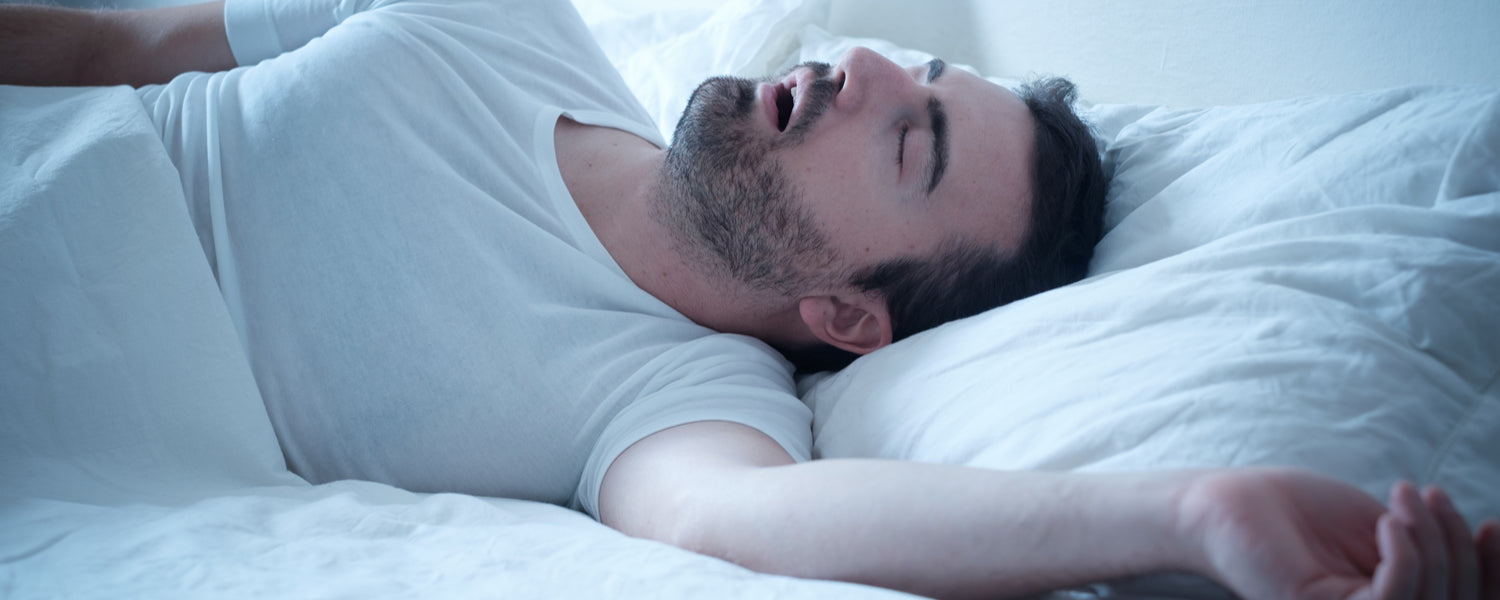Did you know that 5% of Australians suffer from sleep apnea, or that around a quarter of all men over the age of 30 suffer from it to some degree?
Sleep apnoea occurs when the walls of your throat come together while you sleep, blocking off your airway, which causes you to stop breathing until your brain notices and sends you a wake-up call. You will then wake up suddenly, open your airways to breathe and then go back to sleep almost immediately. This process can repeat throughout the night, hundreds of times which causes a very disturbed and broken sleep. The sudden choking or gasping noises that is caused by the sleep apnea sufferer’s sudden open of their airways is often disruptive to their sleeping partners' rest as well.
Best sleeping positions for sleep apnea
If you snore or have sleep apnea, you might know already that lying on your back is the worst position to sleep in, because the gravity increases the tendency for your jaw, tongue and soft palate to drop back toward your throat, narrowing your airways and causing increased breathing difficulties.
According to research, sleeping on your side is the ideal sleeping position for people who snore and suffer from sleep apnea, as this position allows your airways to remain more stable and less likely to collapse or restrict air.
How your pillow choice can affect your sleep apnea
While the right pillow unfortunately cannot cure sleep apnea, by choosing a pillow that is wrong for your sleeping position, you could be contributing to your snoring or sleep apnea.
- Side Sleepers
To help keep you in the perfect sleeping position for your sleep apnea, you need the perfect pillow for side sleepers. Spinaleze™ High and Medium Profile Pillow’s patented and uniquely innovative designs have been created with side sleepers in mind, and provide optimal spinal support and comfort, helping to relieve pressure in the shoulder and keep the head level so that it is in neutral alignment with the spine.
For side sleepers that are under 6 feet tall, we recommend a medium profile pillow is best and if you are over 6 feet tall, a high profile pillow will help to properly support your spine and neck as you sleep.
- Stomach sleepers
Sleeping on your stomach is generally not recommended as it can often lead to neck or back pain, but if you find it hard to sleep on your side, it can be an acceptable option for those who suffer from sleep apnea.
It is important to ensure that you choose a low-height pillow that is helping to protect your neck and spine from becoming too misaligned.
- Back sleepers
If you cannot stop yourself from sleeping on your back, then you need to ensure you use a pillow that is created especially for those who sleep on their back, and you can also use a foam wedge to elevate your head and shoulders, which should help to reduce the conditions which cause sleep apnea.
Finding a solution to your sleep apnea
While the right pillow may go a long way in helping sleep apnea, if you or a loved one are suffering from the condition, we recommend seeing your doctor. For more severe cases of sleep apnea, a referral to a sleep disorders specialist may be required to determine the cause of your sleep apnea and find the best treatment.
Spinaleze specialises in providing Australian-made products that feature patented and uniquely innovative designs that provide the perfect amount of spinal support and comfort to suit anyone, no matter how you sleep.Learn how to choose the best pillow to suit you, and or you can test out our products in person at our Sleep Clinic.
This article should be used for informative purposes only and is not a substitute for a consultation with a health specialist.














